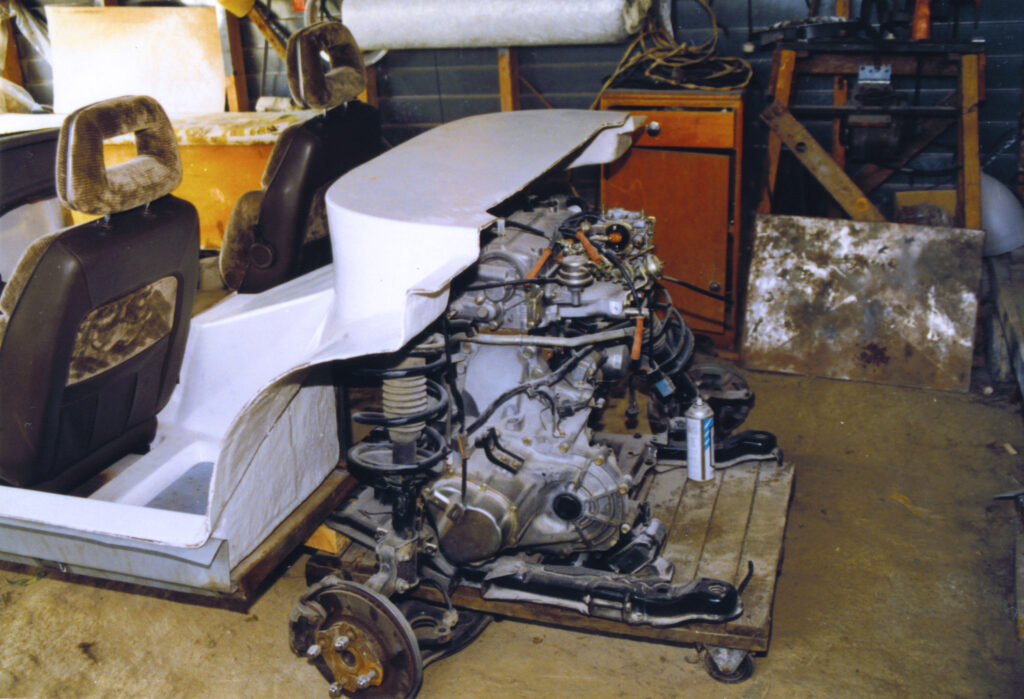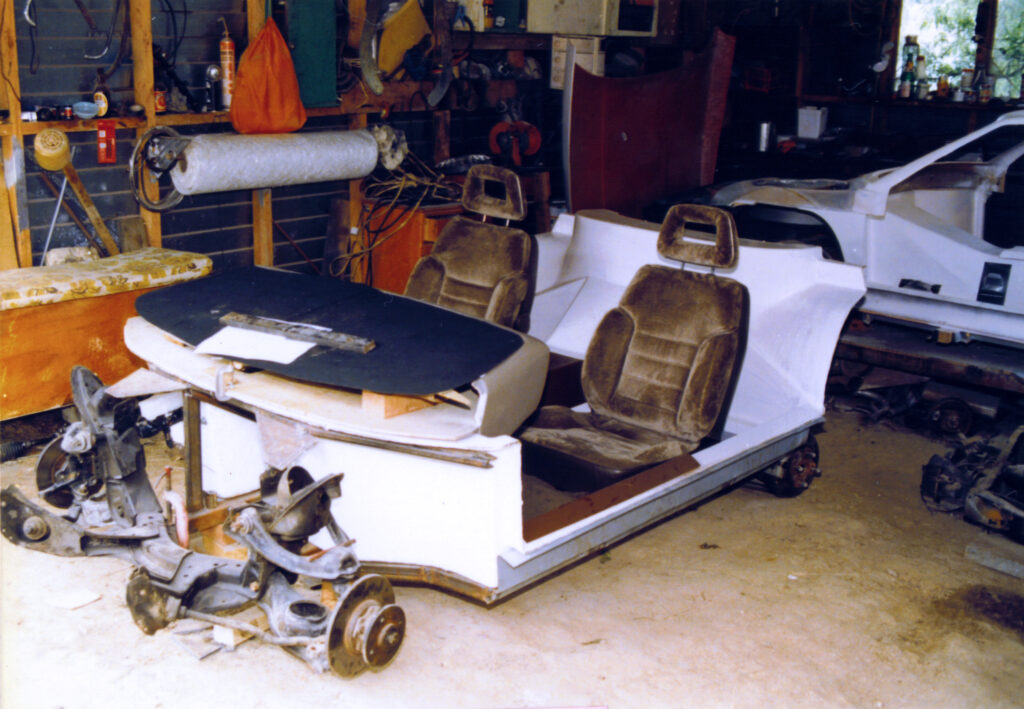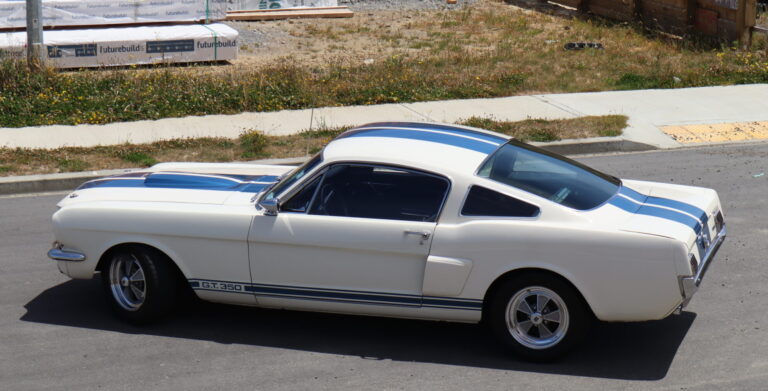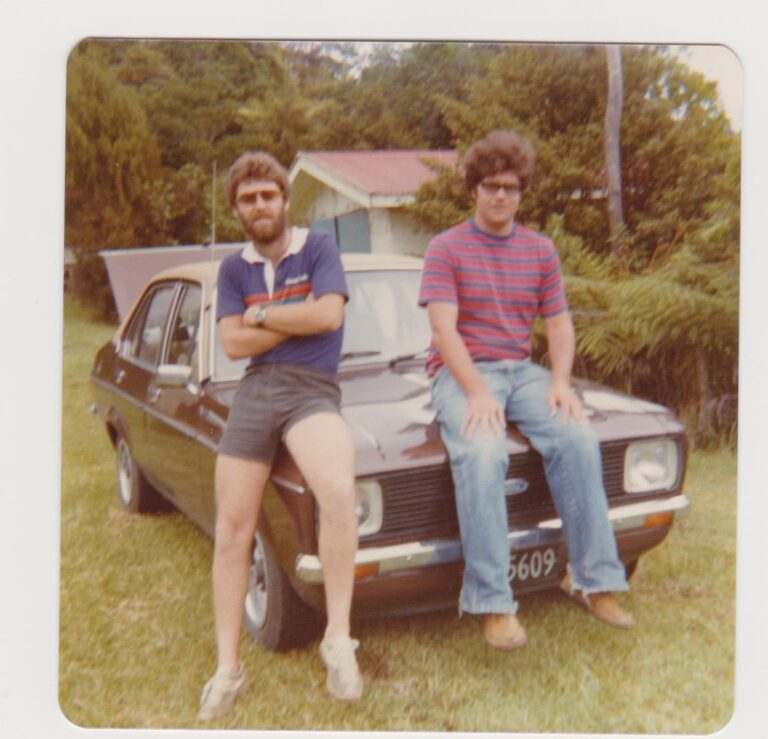The design and engineering challenges were met and vanquished, and the market was primed and ready for a roadster — just not this one
By Patrick Harlow
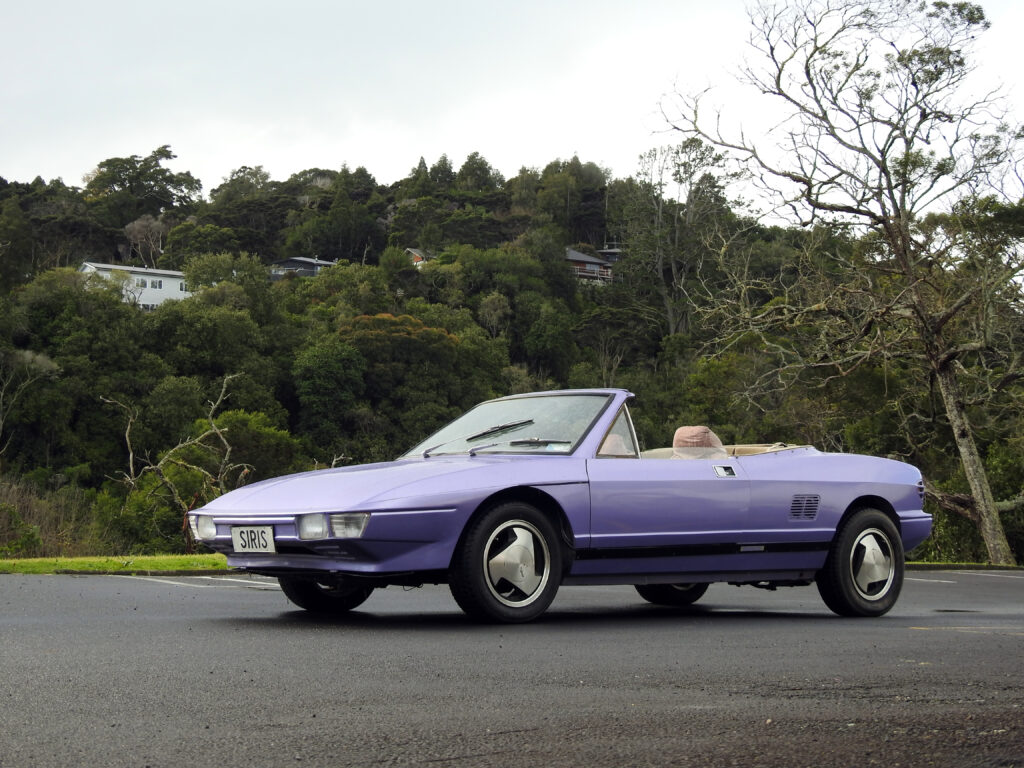
When I visited George Spratt’s workshop in Auckland, I was impressed with the number of vehicles he had tucked away, mostly hybrid or fully electric. Many of them had started life being petrol powered but George has been tinkering with converting conventionally powered cars to electrical propulsion since the mid ’70s.
The Horizon was George’s first attempt at building a car; it was an evolution of ideas about what was considered to be ideal for a car at that time. The shape and style were governed by the choice of running gear and power plant. The size of the garage restricted walk-around viewing, and it was not until it was almost finished that George was able to push the car out of the garage to get the full picture. Even though it was not as aesthetically pleasing as George wanted it to be, it was a car and it had been built from scratch — definitely an achievement, and an opportunity to learn new skills that could be applied to his next car: the Aspen Auroa.
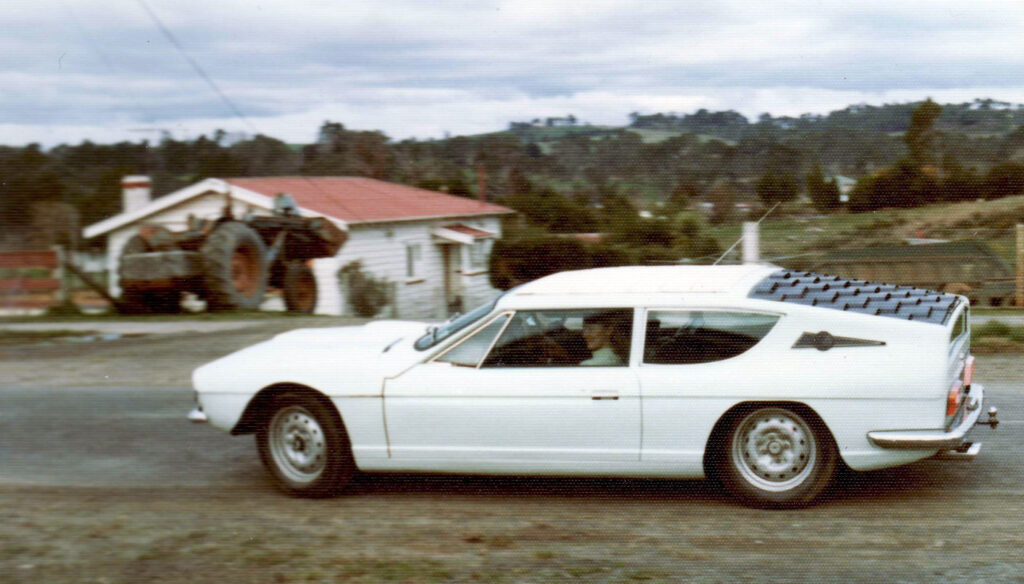
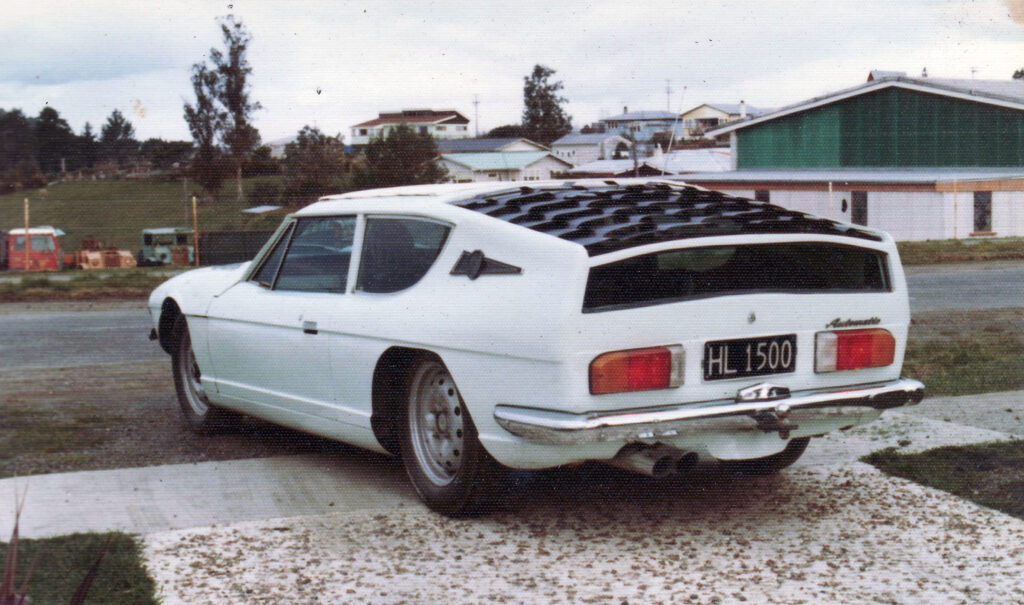
An electric Auroa
The Auroa was all-electric and a much nicer looking coupé. For this second car, a space-frame chassis was constructed with MG front and rear suspension. As it was based on flooded Ni-Cd batteries, George was happy with it. However, he believed he could do better as battery technology improved. The Auroa had a Cortina windscreen and Toyota side glass, which fitted nicely into the fibreglass body. The rear window had to be flat as, at the time, there were no cars with a large curved rear window except those fitted to exotic, and consequently expensive, cars. Using what he learnt from the Horizon, George disguised the flatness with a louvred cover made out of folded sheet aluminium painted black.
A friend, Roger Barker, had seen the car under construction and offered to give George a hand with it in exchange for a body. Once the electric car was finished, George and Roger built a second car using a VW floor pan and engine. Later, the VW transaxle was reversed and inverted so that it could be accommodated in the mid-engine position rather than the usual VW placement, which was behind the rear wheels. Attached to the transaxle was a Daimler SP259 V8 engine, massively changing the sound and performance — it went as good as it looked!
As a result of the number of man-hours that went into each build, the cars were quite expensive and demand dried up after four turnkey cars had been built between 1976 and 1985. Despite it having a good engine, the VW underpinnings did not give it much street cred.

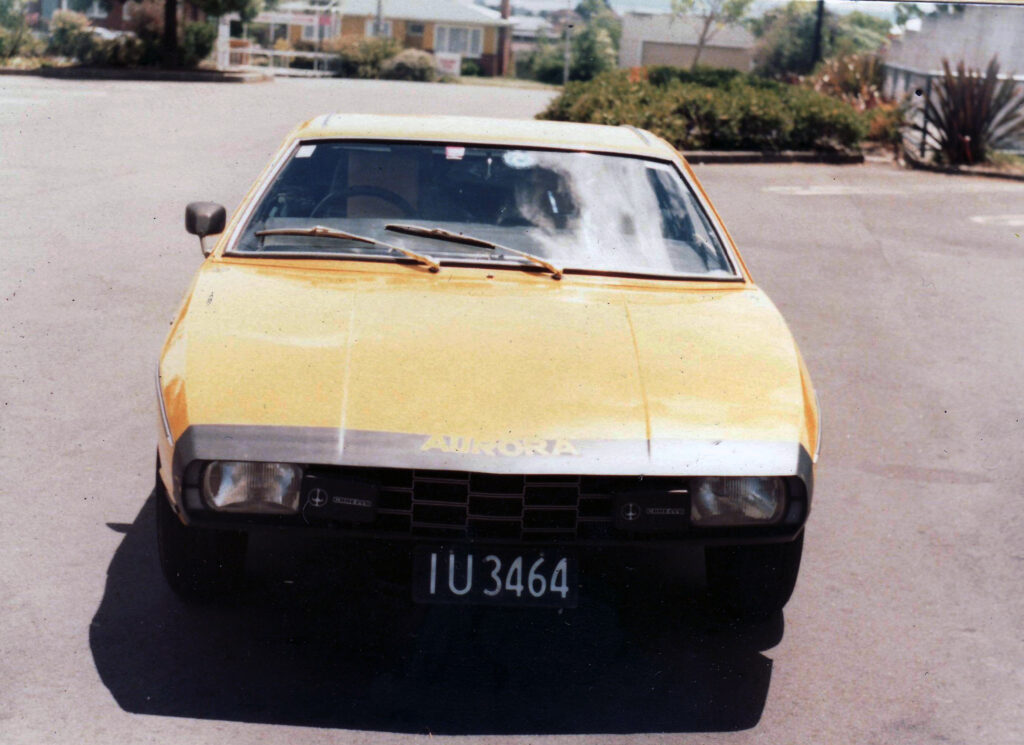
The Lynx effect
That might have been the end of George’s car-designing days had it not been for a chance meeting with Bill Lynch in the late ’80s. Bill Lynch had been responsible for the creation of one of New Zealand’s most successful kit cars, the Lynx. More than 120 examples of the Lynx were produced over a three-year period. It was a simple car, loosely styled on the legendary Lotus 7. (See Classic Car, issue 351, Kits and Pieces). By the time Bill met George, he was no longer involved with the Lynx but he had heard of the Auroa and was keen for George to revive production of it. George was interested but felt that a VW-based car was no longer viable in the 1990s.
Bill managed to convince George to give another car a go, and this time they would get it right. Rather than using a VW chassis, they developed a composite chassis/floor pan that consisted of a steel ladder frame with a moulded fibreglass interior for additional rigidity. This chassis was designed to take a multitude of engines, which could be mid, rear, or front mounted. Originally, the intention was for the chassis to take a variety of different bodies. Such was Bill’s enthusiasm, it was even envisioned that they could make an amphibious car.
The amphibious car was to remain a ‘what if’ as they got into the serious work of building the first chassis. Together they designed a backbone chassis with an integral fibreglass floor pan, George doing all the calculations to ensure that they got it right. As with the Auroa, they started by using the same track and wheelbase as the VW beetle. These measurements were all that the VW would offer to the project.
Howard des Vries heard of the project and offered to inject some capital, along with a lot of enthusiasm to get the project going.
Once the first chassis was built, the pair started building the first car for Howard in a garage in Glendene, Auckland. As Howard was putting the most money upfront, it was only fair that he got the first car. Initially, it was going to be another Auroa and a new Auroa body was made. But George wanted to build something different: a convertible. Howard and Bill agreed with him; in those days coupés were quite common and it had been a long time since the MG roadster had been in production, leaving a gap in the market currently ignored by other major manufacturers. So, the consensus was to convert the car into a roadster. It seemed like a brilliant idea, and none of them knew that Mazda had spotted the same gap in the market and had begun development on a car simply called the MX5.
The Auroa body they had pulled out of its mould for Howard became the starting point. This became the plug for the new car. Panels were cut off and reshaped for the roadster that was now called the Siris. With its pop-up headlights, the Auroa had been expensive to manufacture so sealed beam units were mounted in the more conventional location in the front of the car. The rear end was also modified to have a boot and a unique tail-light design.
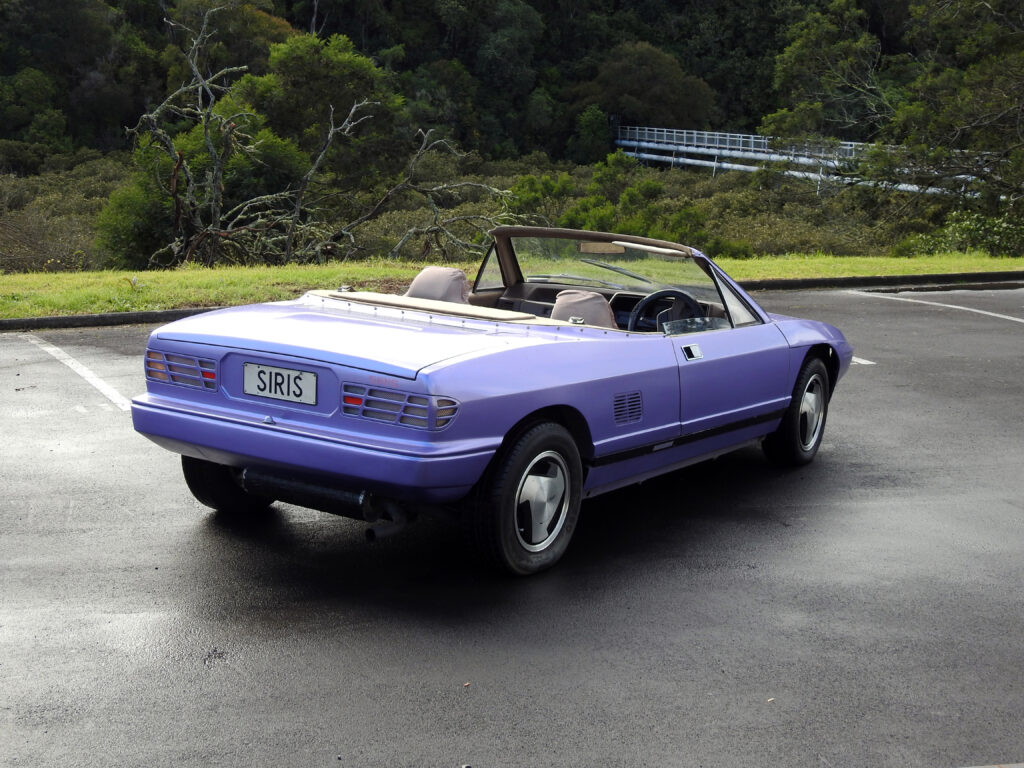

P76 power
The parts that were used for the new space-frame chassis were modern and reliable, with the best bits coming from the Mazda 626. These included the instrument cluster and the dash assembly, complete with glovebox and heater controls. The entire 626 front subframe, with engine and gearbox, was moved to the back, albeit with the steering front wheels fixed in place. A sturdy Ford Cortina double-wishbone front suspension and steering box set-up was fitted to the front of the car, with the Mazda steering column, stalks, and steering wheel completing the picture.
Howard’s car was finished and road legal by 1989. It became the demonstrator and appeared at many car shows.
The second car was always going to be George’s, but he decided that his car should be a little bit different. Being an engineer who liked solving problems, he decided to mount a P76 4.4-litre V8 to the Mazda gearbox in an east-west configuration. It was a bit tight, and some compromises had to be made, but he managed to do it without having to flare the clean body lines. The five-speed Mazda gearbox proved to be quite capable of taking the power of the bigger motor, and is still in the car. With the completion of the second car in 1992, all the engineering problems had been solved and they were ready to go into production.
Unfortunately, they were caught out with the arrival of the MX5. Even worse, across the ditch, Ford had released a very similar-looking car to the Siris: the Capri convertible. Although the Siris was a better-looking car than the Capri, they both appeared dated alongside the much more modern-looking MX5.
Howard tried hard to market the car, but by the time production stopped in 1994 only one more car had been pulled from the moulds. The original dream of building different bodies with different motor configurations was no longer feasible — a sad ending for a unique and adventurous car design.
George still owns his mauve Siris and, despite it having sat for many months, it started right away when I visited. However, it was looking a bit tired and in need of a bit of love. Thirty years on, it is the only surviving Aspen Siris. Hidden away in another location is the last surviving Auroa. George admits that the Auroa is not in as good a condition as the Siris, but sorting it out is on his to do list.
